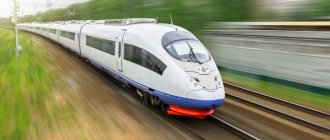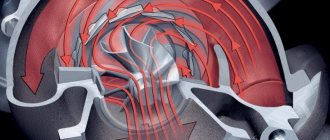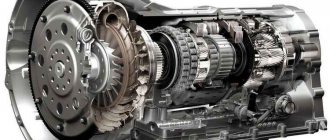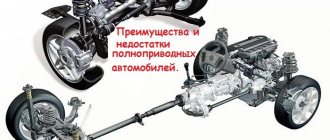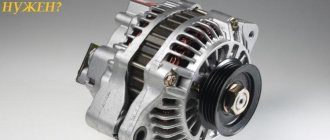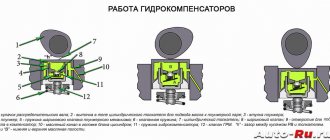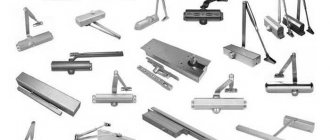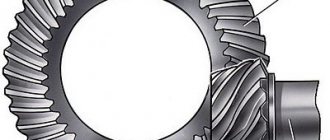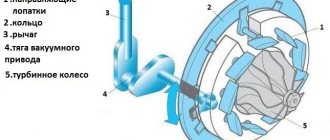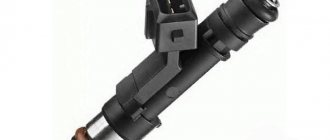Where does tuning begin?
If you purchased a car, especially a used one, the first thing you should pay attention to is the condition it is in. If you are well versed in its structure, you can completely disassemble it into small screws. Only in this case can you fully examine all the elements of the body and assess their condition. The main problem that most motorists face is the presence of rust. All elements of the body are susceptible to it, but especially the wings, bottom, and sills.
Body problems
On cars of the 8th and 9th VAZ families, the TV is also a problem area. Domestic cars, especially Zhigulis, use rather thin metal. Unless, of course, these are the first six issues. Therefore, if you increase engine power, high loads will be applied to the body and the metal will begin to tear.
Moreover, it does not matter whether the body is in good or bad condition. Therefore, before tuning, it is necessary to install new body hardware. And replace all the metal that is in the engine compartment with something more durable. Only after all the work to improve the body has been completed can further improvements begin.
What is a turbocharger and what does it consist of?
Mechanical turbocharger for a passenger car
In short, a turbocharger is a device for pumping compressed air into the engine cylinders.
Diagram of a standard mechanical compressor for passenger cars
Now let's look at this device in more detail.
Diagram of the movement of air and exhaust gases in a mechanical compressor
The engine works because the fuel-air mixture supplied to the cylinders is constantly burning. The optimal ratio of fuel and air in this mixture depends on the type of engine. The dimensions of the cylinders are also important: they limit the volume of the supplied mixture. A turbocharger eliminates this limitation. During the intake stroke, it supplies more air to the cylinders, further enriching the mixture. When burned, it releases much more energy, increasing engine power by 20–40%. There are two types of turbochargers:
A mechanical turbocharger uses the energy of exhaust gases: they are supplied to the turbine impeller, causing it to rotate. The compressor blades are located on the same shaft, which creates the necessary flow of air pumped into the cylinders.
Electric turbochargers are relatively new. They do not use exhaust gases in their work. These devices build up pressure using separate compact electric compressors.
Which engines are easier to turbocharge?
Even if you are planning to improve a car of the “classic” series, it is better not to be lazy and buy a 16-valve Priora engine. Fortunately, there is now no need to register the installation of a new engine through the traffic police, since this element is a spare part. The advantage of installing a 16-valve engine is that it is much easier to repair, and tuning is also carried out without any difficulties. But the most important thing is that it initially has very high power, much higher than on any other Lada car.
Yes, and you no longer need to get into the engine structure, adjust the gaps in the valve mechanism, or adjust the SOP. Please note that carburetor engines cannot be turbocharged, no matter what anyone says. The essence of the turbine is that it pumps pressure into the intake manifold and creates air pressure that enters the combustion chambers with fuel.
If you put a turbine on a carburetor engine, it will simply stop working. Eight-valve injection engines may be suitable, but they have much less power, and if you value every horsepower, then this is a significant disadvantage.
Elements of the turbocharging system
Any engine that is equipped with a turbocharger has a very good performance in terms of liter power and fuel consumption. That is, from a certain displacement of a supercharged engine, much greater specific power is removed than from a naturally aspirated engine. Due to the fact that a much larger amount of air passes through the turbine and through the intake manifold at a higher speed, the turbine itself heats up quite quickly and strongly. Therefore, an obligatory component of turbocharging is an intercooler - a cooling system for the charged air. The cooler the air is when it enters the combustion chamber, the more efficient the combustion process will be. This is, firstly, and secondly, if the cylinder head is severely overheated, there is a danger of detonation.
The main elements of the turbocharging system remain:
- turbine and intercooler;
- pressure control valve;
- a bypass valve that removes gases from the turbine if the throttle is closed;
- balancing valve, which allows you to relieve excess pressure;
- turbine housing;
- air and oil pipes.
What else is needed for tuning
Before installing a turbine on a VAZ, you need to decide how much total power you want to squeeze out of the engine. If you want to get more than 200 horses, then you need to find a block from Kalina. It is 2.3 mm higher than the standard one. You can use an engine block from a 10th family car, but this will significantly reduce power.
It is imperative to install the crankshaft from a Lada Kalina car. The diameter of the crank mechanism is 75.6 mm. Be sure to use and carve a notch in them, which will allow you to achieve the required degree of compression. It is recommended to contact a competent specialist to make these recesses, or to purchase ready-made products in tuning stores.
Preparing to install a turbocharger yourself
- First you need to decide on the turbocharger model. It should be selected based on the type of engine, its volume, as well as the power that the car owner plans to receive after installation;
- oil and air filters are checked (and, if necessary, replaced);
- Next, you need to check the level and quality of the engine oil and the condition of the oil lines. Under no circumstances should dirt be allowed to enter the oil line while the compressor is running;
- the condition of the catalyst is checked. If you plan to use a mechanical compressor, a clogged catalyst can create an excess of exhaust gases in the fuel system, which will lead to overheating of the turbocharger;
- You should also check the condition of the air pipes. If there is a lot of dirt in them, they should definitely be washed in kerosene;
It will be useful: How to restore a leather steering wheel with your own hands?
Turbocharger selection
You can make a turbine for a VAZ with your own hands, but this is a very difficult task, so it is better to overpay a little and purchase a ready-made unit at least on the secondary market. You need to pay attention to the fact that the small turbocharger only works at low and medium speeds.
As soon as the crankshaft speed increases, the turbine is switched off. Large turbochargers, on the contrary, operate only at high and medium speeds, but at low speeds they turn off. There are several popular models:
- TD05 made by Mitsubishi. The boost is set at 3 thousand rpm, allowing you to squeeze out 250-300 hp. With.
- TD04L manufactured by Subaru, boost installed at 3 thousand rpm, power 200-250 hp. With.
- IHI VF10 this turbocharger is significantly larger than the Subarov one, it allows you to squeeze out 250 horses or more.
There are many Chinese turbochargers, their quality is very poor, but the price is reasonable. The price of a turbine for a VAZ on the secondary market fluctuates within a very wide range - from 5,000 rubles to several tens of thousands.
Do-it-yourself turbocharging installation on a VAZ
In this regard, there is an irresistible desire to increase the power of domestic cars using a turbocharger. Let's say more, this is quite possible, but the profitability and expediency of this idea is in great doubt. Let's look at the numbers so as not to be unfounded.
We don't need an engine that will only work at high speeds, do we? We want to enjoy driving not only on the race track in our six or VAZ 2107? Then the entire engine will have to be completely rebuilt. And that's why. Turbocharged Subaru WRC or Mitsubishi Evolution engines begin to operate as early as 2000 rpm, that is, their volume is such that the required turbine pressure must ensure normal combustion of 10-12 kg of air per minute in order to obtain 210-240 power at the output. A one and a half liter VAZ engine, of any design, be it 2103 or 21093, will require crazy pressure in the combustion chamber in order to produce high torque at least at medium speeds.
“Crazy pressure” means about 2 bar. This is subject to adequate fuel supply, which would ensure combustion of 12 kg of air per minute. Naturally, a one and a half liter engine, especially with puny VAZ components, is not capable of this, which means that the increase in torque will be at the level of 3-7%. This will affect horsepower in approximately the same range. Therefore, it is possible to install a turbocharger on a VAZ. But there will be no sense from this, or it is necessary to completely change all the characteristics of the engine, starting from the compression ratio, ending with the engine displacement and the design of the timing belt and power supply.
It will be useful: How to restore a ball joint with your own hands?
How to do cooling
When upgrading a car, it is imperative to install new elements in the cooling system. You will need a double-row copper radiator. It is used on VAZ-2110 cars. It works much better than other radiators.
Try to use a normal sized intercooler. If it is very large, then the problem of turbo lag will arise. This is the case when a long time passes between opening the throttle and building up boost pressure. But a very small intercooler will not be able to cool the air properly.
Features of the fuel system when working with a turbine
Even if you install a homemade turbine on a VAZ, you need to completely reconsider the entire fuel system. It is necessary to have a return line and a fuel mixture pressure regulator. An external regulator can be used, but it must be connected using a vacuum hose to the receiver installed behind the throttle.
A standard fuel pump is clearly not suitable, as it has very low performance. It is advisable to use a fuel pump from Volga, Gazelle or Walbro cars - it has a capacity of over 255 l/h.
The injectors that are installed on the engines also need to be removed. Try to use only units that are designed to operate in engines with a power of more than 200 horsepower. An excellent option is electromagnetic injectors produced by DEKA-630CC. You can do all the work yourself, but if you don’t want to do it, then any service will provide you with all possible assistance.
How to install a turbocharger
First, let's list everything you need for the job.
Tools and Supplies
- Set of spanners.
- Set of open-end wrenches.
- Set of clamps for air pipes.
- Flat screwdriver.
- Turbocharger.
- A piece of thin wire with a diameter of 2 mm.
- Container with turbine oil.
- Container with kerosene.
- Rags.
Sequence of operations when installing turbocharging
- open the car hood, remove the carburetor and air filter;
- using open-end wrenches, all air pipes are unscrewed and washed in kerosene (if this operation is not possible, the removed pipes can be wiped with a rag soaked in gasoline, but kerosene is still preferable);
- using a wire, all channels through which air enters the engine are cleaned;
- the turbocharger is connected to the air supply system and securely fixed;
- the pipes for air injection and exhaust gas outlet are also fixed with special clamps;
- The turbocharger shaft is rotated several times by hand, while at the same time a little turbine oil is poured into the device. The turbine rotor should not stop;
- the air filter, carburetor and pipes are installed in their original places, after which the car engine starts at low speeds. The machine must be allowed to run for at least 15 seconds, after which the engine must be re-inspected;
- if no problems are identified, the installation of the turbocharger can be considered successful;
Video: installation of turbocharging on a VAZ 2109
Setting up the turbine operation
A simple electric turbine on a VAZ can increase power, but only slightly. The use of mechanical turbochargers will be much more effective. The turbo engine is tuned using a wastegate. The pressure in the fuel system will be greater, the less it is released into the atmosphere. It is advisable to use special designs of boost controllers to adjust the pressure level.
Using this simple device, you can set the required pressure directly from inside the car. With its help, the safety valve installed on the manifold does not relieve pressure. Therefore it is gradually growing.
It is imperative to “reflash” the electronic control unit, since the operating modes of the engine will change significantly. It is advisable to entrust this work to experienced specialists, otherwise improper operation of the engine will affect not only the power, but also the consumption of gasoline and oil. In addition, all engine components can wear out hundreds of times faster than with normal settings.
To get the most out of a car, automakers are turning to turbocharging the engine, but a new type of turbocharger is on the way that could change the game.
Downsizing a car's engine is one of the key solutions used by automakers to reduce vehicle fuel consumption (from Audi). However, in order for a smaller engine to have high performance, car companies typically use turbocharging, which is driven by exhaust gases (read more about how turbocharging works). The classic turbocharging scheme has one serious problem; it leads to a delay in the boost response. This phenomenon is commonly known as turbo lag. To make it clear, let’s explain it more simply, you are overtaking, press the gas pedal to the floor, the turbocharger turns on, but the car jerks only after a couple of seconds due to the so-called turbo lag.
This slow response has plagued turbocharged cars for years and is a common complaint. Things like twin-scroll turbocharging or small turbos are often used as a means of combating this lag, but they aren't perfect either. Attempts to curb this drawback with the help of the so-called, which we wrote about earlier, also, unfortunately, did not lead to anything, failing to stand the test in practice. Simply put, it is very difficult to make a turbocharged engine with immediate response.
Operating principle of electric turbocharging
Everything will remain in place until we start using electrical components. While automakers have explored the pros and cons of all-electric powertrains from all angles, they have found that when it comes to electric motors, the response is immediate. Take the classic Toyota Prius for example; you won’t find a faster response to acceleration in any car with similar parameters. Of course, electric vehicles are expensive due to the size of their motors and batteries, and they are not entirely practical due to their limited driving range. But despite this, automakers can use small electric motors and components for their own purposes. One such case is powering a turbocharger, which accelerates a car's engine without relying on exhaust gases.
The electric motor reacts instantly, within 250 milliseconds. Using such a mechanism, you can reduce fuel consumption by 10 percent. Since this type of turbocharger does not use exhaust gases, it is technically just a supercharger. To make the concept of this mechanism clear to consumers, it is often called electric turbocharging.
Volkswagen and its related car brands are actively investing in this electric turbo technology.
Audi demonstrates E-Turbo
Audi recently unveiled its latest in the world of electric turbocharging with the Clubsport TT Turbo Concept, which delivers 600 horsepower and 479 Nm of torque from its turbocharged 2.5-liter five-cylinder engine. One turbocharger is traditional and is driven by exhaust gases, the second turbocharger works with an electrical unit.
The company created a concept to demonstrate the potential of electric turbochargers, signaling that the technology is ready for use in production cars. The 48-volt electrical subsystem that powers the electric turbocharger is located in the trunk of the car and gives the engine acceleration when needed, without keeping it waiting like a traditional turbocharger.
"The electrically driven turbocharger provides significant benefits," a spokesman said.
This operating principle allows conventional turbocharging to be designed specifically for high-power engines - e-turbo provides instant response and powerful sprint at low engine speeds.
This isn't the first time Audi has shown its interest in electric turbocharging. Last year, the German automaker added electric turbocharging to the 3.0-liter twin-turbo V-6 diesel engine and shoved the whole mixture into the RS5. The result is a defiantly fast coupe that accelerates from 0 to 100 km/h in just 4 seconds. This makes it faster than the regular RS5 and cuts fuel consumption in half.
When can we expect electric turbocharging in production cars?
With all the positive feedback the technology is receiving, Audi is likely to be among the first automakers to use electric turbocharging in a production car, but the company is still tight-lipped about when we might see them in dealerships.
Today I want to raise an interesting topic; in principle, this is a logical continuation of the article. If we jump ahead a little on the topic, it turns out that now all turbocharged engines use mechanical air compressors; this approach has many advantages and many disadvantages. But recently, many companies began to think about electric turbines that will not use exhaust gases from the car, and also will not have mechanical connections and drives, and the air will be pumped by an electric motor that will be “powered” from the on-board system...
Not a bad idea! After all, you can avoid many of the disadvantages of mechanical systems, especially turbines that run on exhaust gases, such as:
2) Turbine cooling
3) Engine oil lubrication
4) Oil consumption
5) Well, and of course a resource
If we draw the line, we can understand that mechanical systems are far from ideal. Of course they will be more reliable. However, they also have disadvantages; this is the same drive that uses a regular belt for operation, which wears out over time.
In general, the developers thought and realized that mechanics can be replaced with electrics! Or is it not possible?
Automotive electric turbine
We are creating a working electric turbine that is not expensive and quite easy to install.
The most effective way to increase the power of a car engine is a turbine. However, it has a number of significant disadvantages, such as: the presence of turbo lag, optimal operation in a small range of engine speeds, low service life, difficulty of installation in an engine unprepared for this.
An electric turbine can solve many of these problems. With an electric turbine, the required boost pressure can be created at any time and you can slow down without fear that the pressure will drop. An electric turbine does not have a hot part that heats up to a thousand degrees. This has a positive effect on its service life, price and ease of installation.
This article will be devoted to our development in this direction.
Development and design features
At the moment, in China you can buy many electric turbines that are placed directly at the inlet in front of the air filter. However, they turn out to be 100% useless. To ensure the required pressure and large volume of supplied air, the power of the electric motor should be about 4 kW. Chinese turbines have a power of several hundred watts.
For this task, we specially developed a brushless electric motor capable of delivering up to 5KW of power and which can spin the turbine up to 50,000RPM. The motor was specially designed so that at full power it gives its maximum efficiency of 93%, then it will generate 350 W of heat, which can be easily removed and in theory our motor can produce full boost constantly.
To power this motor, we decided to use two car batteries. This will greatly simplify the operating process and installation cost. One battery is used standard, the second is connected to it in series. To recharge the second battery, it is reconnected to the first through high-precision relay contactors. Lithium batteries would cost an order of magnitude more, and they would require special charging and very careful operation in compliance with the correct temperature conditions.
However, this solution also has a disadvantage. To power the motor at full power, a current of around 250A is needed; lead batteries are capable of delivering this, but not for long (10-30 seconds). Then the batteries will need to rest a little. However, we think this is quite enough; the engine rarely requires full power for a longer period.
We removed everything unnecessary from it and bored it out to mount the motor. All bearings are located directly in the motor and the impeller fits onto its shaft, which automatically ensures alignment of the motor shaft and the impeller. Since the turbine will rotate at very high speeds, we selected Italian-made SKF high-speed bearings for the motor.
To operate a brushless motor, you need a controller, and for such a high current it is quite expensive. However, we specially selected currents and voltages so that the most powerful of the cheap controllers, costing 1500 rubles, would be suitable for this task. This controller is close to full power and at the same time needs to provide very good cooling. More powerful controllers already cost more than 10,000 rubles.
Result
Measurements of our motor at a power of up to 1000 W showed that the characteristics of our motor (consumption, speed, Kv) are quite close to those calculated during modeling. The large volume of stator and copper wire were able to provide high efficiency and low heating. With proper power, the turbine accelerates to the required speed. But unfortunately, we have not yet been able to conduct full tests at full power. When powered by two batteries, 2 seconds after reaching full speed, the controller burned out due to lack of proper cooling. We have ordered a new controller and plan to place it in a container with transformer oil, which should provide it with the best cooling.
Video tests of turbine operation with power supply of 600 and 1000 watts
Conclusion
As a result, we managed to create a working electric turbine that is not very expensive and is quite easy to install. Next, tests will be carried out on a real car.
Approximate cost of necessary components:
- Motor -17000r
- Turbine -20000r
- Battery -3000r
- 4 relays -3000r
- Additional electronics, pipes, air ducts -5000 RUR
The total cost of the turbine kit will be around 50,000 rubles. published
PS And remember, just by changing your consumption, we are changing the world together! © econet
Principle of structure
It should be noted that now some German manufacturers have such superchargers in their engines. And they are installed, as you understand, in the air intake system. Mercedes, BMW and AUDI were the first to use such superchargers.
The principle here is simple - a powerful “fan” is installed, which creates a pressure of approximately 0.5 atmospheres (and possibly more). Powered by the vehicle's electrical system, it pumps additional oxygen into the engine to increase power. With fuel supply settings, you can achieve a significant increase - about 20 - 30%.
The electric turbine should also be adjusted to certain speeds, for example, at idle it should work slower, and at high speeds, correspondingly faster. It turns out to be almost an ideal system! But what’s the catch, where are the downsides? And you know, they exist.
Rules for operating a turbocharged car
After successful installation of the turbine, owners can expect changes for the better. Of course, because in addition to increasing the power of the steel horse, it will consume an order of magnitude less fuel. Approximately 20-30 percent of unburned fuel is not thrown out, as is done in conventional cars, but is reused. Thus, environmental pollution occurs in much smaller quantities.
After correctly following all the recommendations, you can enjoy the result
In order for your tuned car to last longer, you need to follow certain rules:
- be sure to warm up the engine before each trip, and after the trip, let it run for a certain time at minimum speed;
- purchase only high-quality turbine oil. Cheap analogues will harm your car;
- Replace filter elements regularly.
Only if you follow these recommendations will the turbocharger you installed serve for many years.
Video - Do-it-yourself turbocharger installation
Hello everyone, I want to share an idea that once came to me in a dark house, why in a dark house? Because we had to sit without electricity for about four days due to problems at the substation.
The essence of the idea is to assemble a working turbine and at the same time spend a minimum of time/resources literally from nothing .
I had a dead 80 fan that started up but “stalled” for some reason... I took the impeller in my hands and let’s turn it. Well, that’s actually how the idea of creating the first turbine, a monster out of a bottle, came about.
The photo shows what it consists of, the dipstick somehow fell into my hands by accident, but the nozzle came out normal.
Disadvantages of the electric option
Many of my readers think that making such a system is very simple, you need to take some kind of cooler and insert it into the air intake pipe and that’s happiness! Such “miracle coolers” are usually sold in Chinese online stores; we’ll talk about these types below.
However, guys, not everything is so simple here. In normal (idling) mode, a naturally aspirated 1.6-liter engine consumes approximately 300 - 400 liters of air per hour of operation. And at high speeds, say 4000 - 5000, we multiply this figure by 4 - 5, that is, 1200 - 1600 liters. Just imagine this volume! If you calculate the minute consumption 300/60 = 5 liters per minute, or 20 at high speeds.
So - the electric turbine should increase this figure, and not slow it down! If you install a weak engine, it will not pump up the required pressure, but will create an “air lock” effect, that is, with its blades it will slow down the flow of air into the engine and interfere with normal passage.
Now imagine what an electric version of the engine is needed to pump such a volume! I repeat, to increase performance you need at least 6 - 7 liters of air at idle, and 25 at high, and this is for the 1.6 liter version; for larger volumes you need more.
If we draw an analogy with German manufacturers, then they use at least a brushless 0.5 kW electric motor, which rotates at crazy speeds, can reach up to 20,000 and its pressure capacity ranges from 1 to 5 atmospheres.
For more powerful cars, more powerful engines up to 0.7 kW are used.
As it becomes clear, a standard generator may not be able to handle such electricity consumption, so it is replaced with a more powerful one, or an additional one is installed.
And as you know, high energy consumption simply slows down the generators, and therefore increases engine braking, which will affect its output and reduce efficiency.
However, the experiments carried out revealed an increase in productivity by approximately 20–30%, which is significant. But due to the complexity and high cost of the devices, application on cars is not yet in mass production.
For example, mechanical compressors are much cheaper and more efficient. Sometimes the difference in price can reach 5 – 7 times.
Important points when working with a turbocharged engine
- In order for a turbocharged engine to serve for a long time, it should be thoroughly warmed up at low speeds for at least 2 minutes before each trip;
- The oil poured into the turbocharger must be of high quality. Yes, it is expensive, but saving in this case will not lead to anything good;
- it is necessary to regularly monitor the condition of both air and oil filters of the car, since even slight contamination of these elements can cause irreparable damage to the engine;
- It should be remembered that a turbocharged engine needs to be broken in. It cannot be subjected to serious loads until it has traveled at least 2 thousand kilometers. All this time, the pressure in the compressor should not exceed 0.6 bar;
- The engine with the compressor should not be turned off immediately. It is better to let it idle for at least one minute. This will cool the turbine;
Despite a number of disadvantages, after installing a turbocharger, the driver can expect changes for the better. The engine’s power will not only increase, but its “gluttony” will also be significantly reduced, since in a turbocharged car about 30% of unburned gasoline is not emitted into the atmosphere, but is reused. So, if the above precautions are observed, the driver will not only be able to drive faster, but will also save a lot of money.
A few words about Chinese electric turbines
Literally 2 years ago, the “auto Internet” simply exploded with electric turbines from China. A small “thingy” was offered, which was installed in the gap in the air intake hose, which supposedly pumped air with pressure into the engine, a promised increase in power by as much as 15%! The engine itself was an incomprehensible cooler, neither electricity consumption, nor speed, nor pumped air - there were no indicators. If you even disassemble it visually, it becomes clear that this is a cooler similar to advanced computer coolers, so what can it increase? NOTHING! So we just don’t buy - it’s a SCAM.
Now, of course, other electric turbines are starting to appear on the same Chinese sites, many are even made in the shape of a snail - ala a mechanical compressor. But again, there are no indicators of pressure, consumption, or air pumping. Think before you buy. Let's watch an educational video.
Is it possible to make an electric version with your own hands?
Hypothetically, it is possible, and many people install this on their car. Personally, I also thought about installing it on my car, but the price stopped me.
You need to solve a number of points:
1) Definitely installing a powerful generator, which is already expensive for a foreign car.
2) A powerful and compact electric motor, preferably brushless, it produces high speeds with optimal energy consumption. Personally, I have seen these for compact models, but with a power of 0.5 kW and above they are also not cheap.
3) Impeller and housing. You also need to make it yourself or buy it for maximum air injection. Also not an easy task.
4) And of course, a stabilizer or inverters to power the electric motor.
The tasks are not simple, some foreign cars do not have powerful generators, so it is very difficult to do!
But many craftsmen install it on their cars in the garage; an increase in power can actually be achieved up to 20 - 30%.
Moreover, many people install an additional air consumption sensor in the pipe in front of the turbine; it “sees” the pumped volume and automatically regulates a larger fuel supply (supplies values to the ECU) to enrich the fuel mixture. So the firmware may not be needed.
To make your vehicle run more efficiently, automobile manufacturers often resort to turbocharging systems. But will the new type of turbocharger have such a positive effect on engine performance? To make a car's fuel consumption much lower, manufacturers often use one key solution - reducing the volume of the power unit. But among other things, in order for the performance of such engines to remain at a decent level, they usually install turbochargers that are controlled by the exhaust and have a delay, which is better known as “turbo lag”.
Cars have been subject to this problem for many years in a row, which was accompanied by constant complaints and dissatisfaction from the owners. What seemed to be a panacea was found - the simultaneous installation of two turbines, which minimized the effect of the turbo pit. But this, alas, did not become the key decision.
History of the Electric Turbine
After a long period of development, the electric turbine is ready for mass use. Controlled Power Technologies (CPT) was the first to announce this.
from Britain. The electric turbocharger, they say, is ready for mass production. SRT management has already signed an agreement with Switched Reluctance Drives Limited to develop an OEM module based on this technological base.
Switched Reluctance Drives will be engaged in mass production of electric compressors. British developers, meanwhile, have already succeeded in creating real electric compressors for internal combustion engines. The CPT turbocharger will be installed on any engine: naturally aspirated, turbocharged diesel or gasoline.
Controlled Power Technologies has been developing the electric turbine for almost eight years, work on it began at the beginning of the 21st century. The creators of the electric turbine claim that it can operate from an on-board power supply of 12 volts, and its use will save the engine from the effect of turbo lag, and will also operate the supercharger even at low speeds. The peculiarity of this technology is the use of regenerative energy. The back pressure that was previously released through the blow-off bypass valve when the accelerator is reset is now directed to rotate the flywheel turbine blades, allowing power to be generated and the battery to be charged.
A prototype of a machine with an electric turbine was developed by the German company AVL List.
The electric supercharger has been adapted to the two-liter petrol engine with direct fuel injection. Such a power unit, which was installed on the Volkswagen Passat, pollutes the atmosphere very delicately, so to speak, only 159 grams per kilometer, and this is as much as 20 percent less than a similar traditional 2.0 TFSI with the same power, and less, than a 170-horsepower turbodiesel with the same volume.
The developers claim that this technology helps car manufacturers invest in established environmental standards that came into force this year. Controlled Power Technologies has created the SpeedStart
with a belt drive, which is used to operate the Start\Stop system, which turns off the engine during short stops, which is sure to save money when driving around the city in traffic jams.
But along with researchers from Britain, German developers created an accessible idea for pumping air and at minimal cost, which became recognized throughout Europe. A significantly effective way to improve air injection into the engine is a mini-turbine from KAMANN, which is mounted in the intake system.
The KAMANN electric turbocharger is a miniature turbine that acts as an electric air injection system installed in the engine compartment. This installation of an electric turbine increases engine torque, in turn helping to reduce fuel consumption. This improves the quality of exhaust gases, reducing carbon dioxide levels and prolonging the life of the catalysts, which improves the overall speed characteristics of the car.
Operating principle of an electric turbine
The operating principle of an electric turbine differs from a classic turbocharger only due to the design of the axis that connects the impellers of the classic. When the turbocharger reaches maximum speed, the controller turns on the electric motor in generator mode. This prevents the engine from exceeding its peak speed. In cases where the speed decreases too rarely, coupling connections allow the impellers to rotate independently of each other, in turn reducing the load on the bearings.
Structure of a steam turbine
Steam turbines are built as stationary structures, which are used mainly in factory power plants or power plants, and transport ones, necessary for the operation of ship boilers.
Regardless of the principle of operation, the essence of the actions taking place will remain unchanged - the stream of steam flowing from the nozzle will be directed to the blades of the disk located on the shaft, and it is put into action.
Steam turbines are distinguished by the following characteristics:
- Turnover;
- Number of buildings;
- The direction of movement of the steam jet;
- Number of shafts;
- Location of the condensing unit;
- Functionality.
Steam turbines provide long-term production of mechanical energy at temperatures of cooling water up to 330 Celsius. Also, turbines must perform long-term reliable operation with a rated load from 30 to 100%. What is necessary to regulate the distribution of electrical load. The most common condensing turbines are required to provide long-term operation at exhaust temperatures of up to 700 C.
